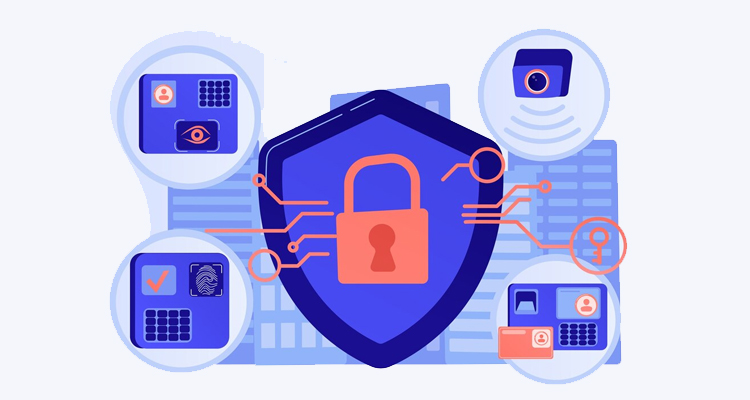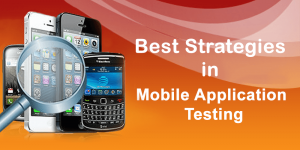
In the landscape of technology, the development of desktop applications stands at the forefront of innovation. This journey toward the future is not merely about creating software; it’s about redefining the user experience, setting new standards for functionality, and embracing the challenges of delivering cutting-edge solutions.
At the heart of this evolution lies the meticulous process of desktop application testing, a crucial step that ensures the software not only meets but surpasses user expectations.
Unleashing the Potential of Desktop Apps
The evolution of desktop applications mirrors the rapid advancements in technology. From the rudimentary applications of the past to the sophisticated solutions of today, the capabilities of desktop software have expanded exponentially.
However, the challenge now lies in harnessing this potential to create applications that seamlessly integrate into the fast-paced digital landscape. Today’s users demand more than mere functionality. They seek applications that are intuitive, responsive, and aesthetically pleasing.
The potential of desktop applications goes beyond meeting functional requirements; it extends to providing a delightful and engaging user experience. This user-centric approach requires a deep understanding of the end-user, their preferences, and the context in which they interact with the software.
Understanding the User
Understanding the user is a multifaceted endeavor. It involves identifying the user’s functional needs and delving into the emotional and psychological aspects that influence their interaction with the application.
User-centric design principles become the guiding light in this process, ensuring that every application element resonates with the user, from the layout to the color scheme. A friendly and engaging tone in the interface becomes a crucial element of this user-centric design.
The language used within the application should convey information and evoke a positive emotional response. This approach transforms the application from a mere tool to an experience, connecting the user and the software.
Desktop Application Testing: The Cornerstone
In the grand scheme of crafting the next generation of desktop applications, desktop application testing emerges as the cornerstone.
It is not merely a checkbox in the development process but a comprehensive and meticulous examination of the application’s functionality, performance, and security. Desktop application testing involves a series of rigorous assessments that span various dimensions.
Compatibility testing ensures that the application functions seamlessly across diverse platforms and devices. With the many operating systems and configurations today, this testing phase becomes imperative to guarantee a consistent and reliable user experience.
1. Ensuring Compatibility
The landscape of technology is diverse, with users accessing applications through a myriad of devices and platforms. Ensuring that the application performs seamlessly on each platform is a daunting task, yet it is essential.
Rigorous testing identifies compatibility issues and allows for optimization, ensuring a consistent and reliable user experience. The goal is not just to make the application work on different platforms but to make it work well.
This requires a nuanced understanding of the intricacies of each platform, be it Windows, macOS, or Linux, and adapting the application to leverage the unique features of each. This is the same principle as designing Android apps for flexible screens.
2. Enhancing Performance
Performance is a key determinant of user satisfaction. Users expect applications to load quickly, respond promptly to their inputs, and operate without glitches.
Through comprehensive testing, developers can identify and address performance bottlenecks, optimizing the application to deliver a seamless user experience.
Performance testing is not a one-time affair but an ongoing process. As the application evolves, so do the performance requirements. With each update, developers must ensure the application maintains efficiency and does not become sluggish or resource-intensive.

3. Fortifying Security
In an era where cyber threats loom large, the security of desktop applications cannot be compromised. Desktop application testing includes robust security assessments to identify vulnerabilities and potential points of exploitation.
By addressing security concerns during the development and testing phases, developers can fortify the application, ensuring that user data remains secure and protected.
Security testing involves probing the application for code, data storage, or communication protocol weaknesses. It’s about staying one step ahead of potential threats and ensuring the application is resilient to cyber-attacks.
4. Embracing Agile Methodologies
Crafting the next generation of desktop applications requires an agile approach to development. Agile methodologies, characterized by iterative development and constant collaboration, allow flexibility and adaptability.
This approach, coupled with continuous testing and feedback loops, ensures that the application evolves with user needs and industry trends. Agile methodologies break down the development process into smaller, manageable increments.
Each increment results in a potentially shippable product, allowing quicker releases and responses to changing requirements. This iterative approach is particularly valuable in the fast-paced world of technology, where trends and user preferences can shift rapidly.
5. Future-proofing with Continuous Improvement
The rapid pace of technological evolution demands that desktop applications be future-proof. Continuous improvement, driven by user feedback and emerging trends, ensures the application stays relevant and competitive.
Desktop application testing plays a crucial role in this process, enabling developers to identify areas of improvement and implement enhancements seamlessly.
Continuous improvement is not just about fixing bugs or addressing user complaints; it’s about staying ahead of the curve. It involves anticipating user needs, embracing emerging technologies, and proactively making changes to enhance the application’s functionality and user experience.
Shaping Tomorrow’s Desktop Experience
Crafting the next generation of desktop applications is a multidimensional endeavor. It requires a delicate balance between technological innovation, user-centric design, and rigorous testing. Integrating these elements ensures the creation of cutting-edge software and lays the foundation for a seamless and enjoyable user experience.
As we navigate this dynamic landscape, where technology is the driving force, the future of desktop applications lies in our ability to innovate, adapt, and prioritize the end-user’s needs. The collaboration between developers, designers, and testers catalyzes the creation of applications that meet and exceed user expectations. In this symbiotic relationship between technology and humanity, we find the true essence of crafting the future of desktop applications.






